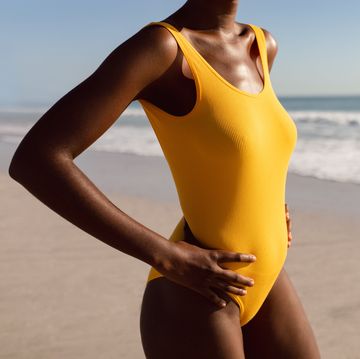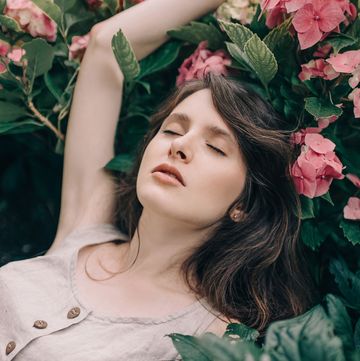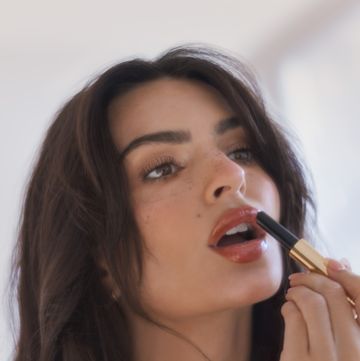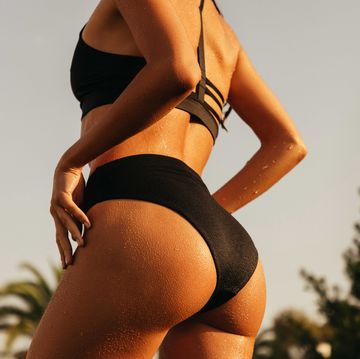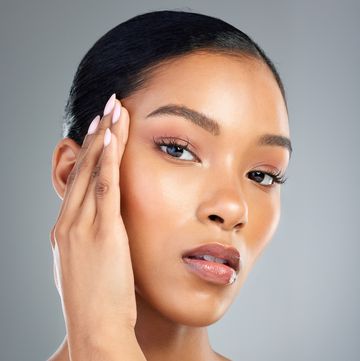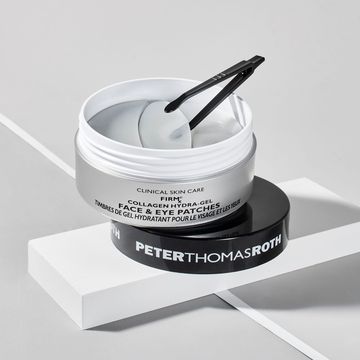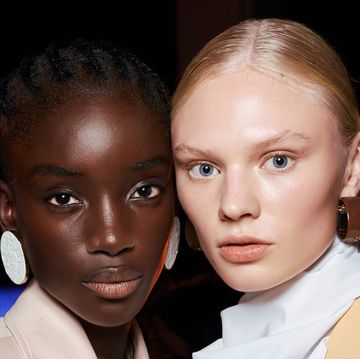This article originally appeared in the August 2016 issue of ELLE.
Living in L.A. for the past two decades, I've become immune to many a visual WTF. Post-rhinoplasty teens with bandaged noses and bruised eyes cruising $5,000 bags at Barneys no longer shock. Prides of taut moms with the exact same shade of buttery highlights and identical plump pouts don't raise a brow. Even matrons with pulled-taffy faces and staple scars behind their ears barely move me. But lately, I've noticed a phenomenon far subtler than these, and yet more disturbing: young women, sometimes very young, their lips suspiciously full, cheekbones hyper-defined, skin seemingly airbrushed, like filtered selfies come to life.
Now, I'm no crusader against cosmetic fairy dust. My inaugural Botox injections, at age 33, erased the two exclamation points between my eyebrows. (I noticed them one afternoon in my rearview mirror at a traffic light and actually rubbed at them with a wet thumb as if they were smudges.) But on the day I got those shots, that was all I got; I left the doctor's office with my laugh lines and the faint crinkles around my eyes intact.
These days, however, a subtle tweak equals a missed opportunity, at least among a certain demographic. And dermatological weapons that originated to replace lost facial fat and smooth lined skin—i.e., to address aging—are augmenting faces that haven't had a chance to age at all or, in some cases, even to mature. New York City–based dermatologist Dennis Gross, MD, says that women barely past college age have begun to come in with a laundry list. "They want these cheekbones. They want those lips. That chin. We're living in a world of immediate gratification," he says. "I tell them, 'You don't have to do everything at once.'" L.A. derm Jessica Wu, MD, sees a fixation with every line: "It used to be people waited until their thirties, forties, and fifties to treat smile lines or crow's-feet. Now it seems like filler is an accessory."
But as I stare (and stare) at these creatures— many of whom have undoubtedly been rendered lusher, more symmetrical, more empirically beautiful by such fixes—I wonder: Are these toxins and fillers actually doing the opposite of what their users hope and making young women look years older? What is the long game for a woman who started customizing her features in her twenties? What will "youthful" look like in her forties and beyond?
According to the American Society of Plastic Surgeons, use of soft-tissue fillers among 20- to 29-year-olds was up to more than 67,000 procedures in 2015, an almost 33 percent jump from 2010; the same age group had more than 100,000 Botox treatments. (To be clear, that's still only a fraction of what 30- to 39-year-olds had done in 2015: 270,054 fillers, 1.2 million Botox sessions.) On the brutally honest cosmetic enhancement forum RealSelf.com—visited by some 77 million people last year—the demographic most interested in dermal fillers so far this year is 25 to 34, and that interest has risen 37 percent since 2015. Among that age group, "there's no more stigma to having fillers or Botox," notes RealSelf spokesperson Jennifer Moses. "The mind-set is more like, 'It's my body. It's my choice. It's my money.'"
Amen to that. But even my five-year-old's devilish grin makes her eyes crinkle. That's not aging, it's looking human. When we see a 24-year-old with no discernible demarcations of life—no fissures, nary a freckle—the brain gets addled. "It's hard to process because it looks odd, abnormal," says S. Jay Olshansky, PhD, a researcher at the University of Chicago's Center on Aging. He calls the effect an "extreme dissonance": It makes us stare at the face longer, trying to figure out what's wrong with it. In 2014, Olshansky helped launch the website Face My Age. It's a fascinating way to bolster or blindside your self-esteem in mere minutes—and, interestingly, two-thirds of its users are between 18 and 34. Plug in your gender and birth date and upload an unsmiling, no-makeup selfie, and, based on wrinkles, age spots, and hair color, the program will assess your age. (It rated me six years younger than my actual age—thank you, Botox.) The algorithm attempts to take plastic surgery into account—it's one of the questions asked—though when Olshansky ran a picture of 81-year-old Joan Rivers, the software clocked her at 56. Rivers would have loved that. But as the TV-watching public knows, the human brain is not as easily fooled. An altered face reads to the eye "as ageless," says Olshansky, but not necessarily in a good way.
Think about it: What assumptions do you make about women who have had "work done"? Even if you can't put your finger on it, even if the work is good, by and large, the brain categorizes them as older. Which, according to Gross, would be the fate young patients fear most. "They'd rather look like techno-humans with no shadows on their faces" than look even slightly aged, he says. He's actually been told, "I'd rather look weird than old."
In 2013, Carolyn Black Becker, PhD, a psychology professor at Trinity University, co-authored a study entitled, "I'm Not Just Fat, I'm Old: Has the Study of Body Image Talk Overlooked 'Old Talk'?" Polling 914 women ages 18 to 87, she found that 66 percent grouse about signs of aging. "What really struck me is that 85 percent of 18- to 29-year-olds are engaging in old talk," Becker says with a sigh. "I heard comments like, 'I use fillers because I'm seeing the bare hint of a line. I wouldn't want to have any wrinkles or any lines on my face.'"
That big a cultural shift can't, and shouldn't, be blamed on a single family, even a very well-documented one. But almost every expert I asked about the filler 'er up era name-checked the Kardashian-Jenners. Kylie, whose extraterrestrial beauty could pass for anything from 16 to 34 (actual age: 18), is probably the most influential shape shifter of all, with her 68 million–plus Instagram fans. In an April interview in Paper, Jenner said the biggest misconception people have about her is, "Probably that I'm just super fake and that at 16/17, I got my full face reconstructed...."
I do want to sympathize, but a review of pictures since 2010 shows an incredible transformation, even given the forces of wealth, puberty, and contouring makeup. Never mind her much-discussed lips—gone is her cute cinnamon sprinkle of freckles, faint laugh lines, and the normal hollows beneath her eyes.
Simon Ourian, MD, the Beverly Hills cosmetic derm to the whole clan, insists that Kylie "hasn't done as much as people think" but agrees that overfilling and over smoothing is making twentysomethings look "older" and "cartoony." As a policy, Ourian won't treat girls younger than 18, but he regularly receives calls from 12- and 14-year-olds looking to inflate their lips. "At 18, they can make a decision for themselves without the influence of other people," he says. "That doesn't mean that they make the right decision."
You can't buy a drink until you're 21, or in some cases rent a car until you're 25. Research into "emerging adulthood"—roughly ages 18 to 29—has revealed that well into our twenties, the brain is still a work in progress. So perhaps it's not a bad idea to wait to change one's looks until the brain, too, has been allowed to mature a bit. (How many of us feel truly great about the tattoo we got at 2 A.M. on our 20th birthday? And chances are it's not on your face.)
A few weeks ago, I had dinner with an 18-year-old movie star who told me everyone asks if her plump pout is inflated. It's not, she swore, and pictures of her as a child with a big pucker are proof. But as we walked through Beverly Hills on a warm night, she went on to tell me she could name three actresses her age who use fillers in their lips and cheeks. "It's crazy," she said with a shrug. "They're already hooked."
Have thoughts? We want to hear from you. Contact us at elleletters@hearst.com.



